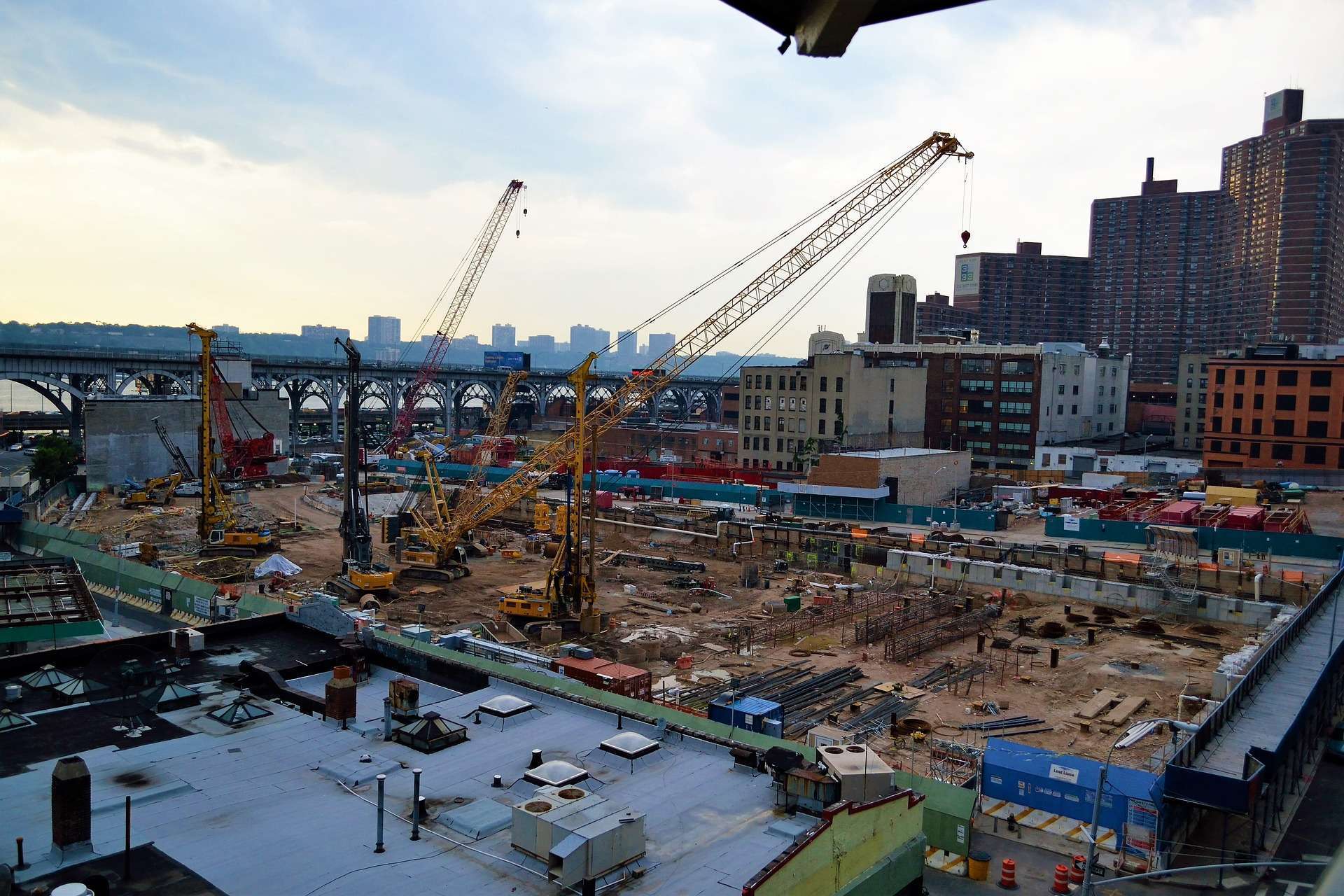
Interested in Joining eXp Commercial as a Commercial Real Estate Agent?
Further Info
https://www.creconsult.net/market-trends/2023-exp-commercial-commercial-real-estate-symposium/
eXp Commercial is one of the fastest-growing national commercial real estate brokerage firms. The Chicago Multifamily Brokerage Division focuses on listing and selling multifamily properties throughout the Chicago Area and Suburbs.

The Commercial Real Estate Symposium will provide junior and senior agents and brokers with valuable insights on topics, including: international opportunities, capital and funding for small businesses in today’s market, how to attract investors, and much more.
Dates: April 25-26, 2023
Start Time: 9 a.m. - 4 p.m. CST
Location: eXp Commercial Campus
We look forward to seeing you in the metaverse!
Important: Please download the virtual eXp Commercial Campus prior to the event, and follow the instructions to login and create your avatar. Feel free to explore the campus before the event begins.

OK, we concede that not everyone may agree budget season is the most wonderful time of the year. But hear us out.
We’ve always loved budget season for the opportunity not only to forecast what the future may hold for a community, but also to dream about how we could kick things up a notch. Budget season provides a chance to contemplate what you could add to your apartment community, both in terms of asset and service upgrades, that would elevate your resident experience—and enable you to reduce costs or increase rental rates and resident retention. When you look at it that way, the budgeting process is like putting together your own community-focused wish list!
While the possibilities to improve your community may be endless, we know that resources are not. With that in mind, we’ve considered the needs and preferences of today’s renters and focused on what upgrades could make the greatest impact.
Here are the top five apartment amenities we think are worth considering for your 2023 community budget:
The pandemic has undeniably changed how we live and work. More Americans are working from home at least some of the time, and this change is likely to be a permanent one. Says Haley Stofferahn of architectural firm RSP, “Unit layouts are becoming more flexible with details and fixtures that allow tenants to convert bonus rooms into an office, a den or a fitness area. We’re also seeing more built-in workstations within units. Outside individual apartments, what once would have been a disused business center is being replaced with comfortable, connected co-working space.”
When planning your 2023 budget, consider the common areas in your leasing center, clubhouse, and buildings. Where can you make modifications to better accommodate your residents who are working from home? Are there spaces that are underutilized that could be reinvented as either shared or individual workstations? The National Apartment Association reports that throughout the industry, community developers and owners are adapting common areas for this purpose. “Instead of lounge spaces with soft seating, there are intentional co-working areas,” says Alison Mills, VP of Design and Development at CRG in Chicago. Reimagining underutilized or even obsolete spaces such as business centers to support how your residents live and work today will make your community more appealing to residents and prospective residents alike.
2. Unforgettable Resident Events
According to a RealPage study, one of the NMHC Top 50 ownership groups found that a residents’ likelihood to renew improves by 8% if they made even one friendship or connection within their apartment community.
If boosting renewals is your goal—and it should be—then strengthening the sense of community among your residents should be top of mind. Purposeful resident events are the ticket to fostering friendships among your community’s residents.
Resident events have come a long way from the days of drive-through breakfasts. Today’s thoughtfully planned events are about bringing residents together to enjoy memorable, social share-worthy experiences. When planned and executed successfully, resident events can make a positive impact on resident retention and serve as a powerful marketing tool. Prospects frequently study a community’s social feeds when deciding where to live, and when your Instagram feed includes evidence of an active and fun resident community, you’ll drive leasing traffic and leases.
Consider budgeting for professionals to help you pull of sensational resident events in 2023, such as:
Enlisting the help of a professional event planner not only alleviates the logistical party-planning burden from your on-site team but ensures a top-notch event.
3. Fitness Center Experience Upgrades
A new year and a new budget can be a perfect opportunity to upgrade the offerings in your fitness center. Renters’ fitness practices and preferences have changed, and yesterday’s equipment may not satisfy. Multifamily Executive reports that in place of treadmills and other more dated equipment, rental housing communities are adding yoga, barre, and cycling rooms, CrossFit training areas, and internet-connected equipment which allows users to stream classes, work with trainers, and interact with other users. Other high-tech equipment that is popular today includes Peloton bikes, Lululemon’s MIRROR, and rowing machines. And according to the National Apartment Association, “pickleball has become one new darling.”
In addition to budgeting for new equipment and annual equipment maintenance for the New Year, consider that your fitness center also presents an outstanding opportunity for building community. Just like with your resident events, budgeting for a professional to come in and deliver high-quality, engaging fitness classes and events on-site can be a powerful resident retention and leasing tool. You can even take the fitness out of the fitness center to an outdoor location such as a community green space, rooftop, or neighboring nature trail. Possibilities include:
To ensure success with your upgrades and events, gather input from your residents before investing in new initiatives. It’s important to match your services to your residents’ desires in order to make a positive impact.
4. Upgraded Air Purification Systems
The rental housing industry is seeing an increased emphasis on air quality both in common areas and in residents’ individual homes. As the Milwaukee Business Journal reported, “the Covid-19 pandemic has forced people to think about the world in new ways, analyzing whether that door handle is contaminated, handshakes are harmless or the air they breathe can be trusted.” In the National Multifamily Housing Council’s 2022 Renter Preferences Survey Report, 71% of respondents report interest in enhanced indoor air quality. An investment in upgraded air purification systems can drive both resident satisfaction and prospective resident demand.
Systems to consider for your 2023 budget include bipolar ionization systems which purify building common areas such as lobbies, clubhouses, fitness centers, and other amenity spaces. According to Business Insider, this equipment can be integrated into existing HVAC systems to surround and deactivate harmful substances in the air such as airborne mold, bacteria, allergens, and viruses. Communities may also consider upgrading residents’ in-unit air conditioning filters from the standard style to a high efficiency particulate air (HEPA) filter which can, according to the US Environmental Protection Agency, theoretically remove at least 99.97% of dust, pollen, bacteria, and airborne particles.
5. New Convenience Services for Residents
Finally, consider adding services that help to make living at your community both easy and convenient. What could be more appealing to your customers than a lifestyle with fewer everyday hassles?
For example, have you noticed that residents receive a lot of packages these days? Online ordering and deliveries of perishables such as groceries and meals to apartment community residents have skyrocketed since 2020. That trend shows no sign of slowing down—especially as Amazon recently announced the addition of another Prime Day to the annual calendar, called Prime Early Access Sale (brace yourself!).
Door-to-door package delivery services can be a huge time- and sanity-saver for both residents and community staff. Consider budgeting for this service in the New Year and removing your team from the chaos that is accepting, storing, notifying, and delivering packages to your residents—so you can focus on the activities that make a bigger impact on your community.
A resident experience app is another enhancement that benefits both the resident and community team and makes life easier for all. Here are just some of the tasks that can be accomplished from a few of the existing resident apps in the multifamily space:
Budgeting for the addition of a resident experience app in 2023 means you can bring a whole host of convenient new services to your residents, while streamlining tasks for your team.
Preparing your community budget for the New Year can be stressful, we know. Narrowing down the seemingly endless list of initiatives, technologies, and enhancements available to your team can be a daunting task. We hope this list of the top five amenities we think are worth budgeting for serves as a good starting point for you as you consider your many options for making a positive impact on your community.
Best of luck to you this budgeting season, or as we consider it, the most wonderful time of the year!
Source: Top 5 New Apartment Amenities to Budget For in 2023

Foreign Investors: What Do They Need to Know Before Investing in the US
There are no citizenship requirements for buying real estate in the US. Foreigners who are non-citizens can even apply for a mortgage in the US. However, foreign property owners may face complex tax laws compared to US citizens.There are no citizenship requirements for buying real estate in the US. Foreigners who are non-citizens can even apply for a mortgage in the US. However, foreign property owners may face complex tax laws compared to US citizens. There are also certain factors to consider before buying real estate, such as a visa and other requirements. Here’s what foreign investors need to know before investing in property in the US:
Basic Requirements for Buying Property in the US
The following are basic requirements you’ll need to buy property in the US.
* Valid foreign passport
* US visa
* Social Security number or ITIN
* Bank statements
* Financial documents from your foreign bank
* Evidence of reserves
* Tax return
If you’re only visiting the US to buy property but have no intention of staying long-term, you must hold a B-1 or B-2 visa. The B-1 is for business visits, while a B-2 is for tourism. As a B visa holder, you can stay in the US for up to 6 months at a time, which is generally enough time for you to make any major real estate decisions. However, to secure this visa, you must be able to prove that you have reserves or sufficient funds to support yourself during your stay.
Mortgages for Non-Resident Foreign Buyers In 2021, 61% of foreign buyers made all-cash purchases for property. As a foreign national buyer, you certainly have the option to pay all cash. However, you can also obtain a US mortgage without a US credit history. There are US mortgage lenders that specialize in foreign national mortgage loans. To obtain pre-approval, you’ll need to provide additional requirements that demonstrate your ability to make payments on the property, including evidence of assets or savings that can help you make a down payment.
Because you don’t have a US credit history, the US lender will also likely use an International Credit Report. The credit report will provide data that mortgage lenders would typically need to assess creditworthiness. It will reveal your credit history in your home country, property ownership, and property tax. The lender will also investigate public records to identify if there are any liens, judgments, or foreclosures in your name for property inside and outside the US.
Taxes for Foreign Property Owners
The Foreign Investment in Real Property Tax Act of 1980 (FIRPTA) may apply to your property purchase. The tax law will impose a US income tax on you should you eventually decide to sell the property or receive income from it. In general, income from US property owned by a foreign national is taxed at a 30% rate. However, there are tax treaties that exist with several foreign countries. And if the treaty applies to you, you might enjoy a reduced tax rate. Additionally, some states may require an additional holdback from a foreign investor when they do sell a property in the United States.
Because of the complexities of investing in real estate in the US as a foreigner, it’s best to work with a reputable real estate company.
Source: Foreign Investors: What Do They Need to Know Before Investing in the US

Complacency is the most dangerous state to ignore.
It’s the moment before the market corrects and values decline. When the market goes through this initial correction, our natural tendency is to be complacent because initial corrections actually look like a cool-off period.
Then we expect the market to pick up again and continue with its growth phase.
But, the market continues to deteriorate and worries creep in as we wonder what is going on. Next, it is normal to say to yourself that your investments are good ones that they’ll ultimately come back.
When the market continues to soften until it seems there is no hope in coming back, that’s the absolute bottom of the market and the worst time to sell.
This point of capitulation is one of surrender and of asking how the government could let something like this happen.
In order to avoid loss, people will overvalue what they own.
That is what Richard Taylor, Daniel Kahneman, and Jack L. Knetsch identified with the Endowment Effect. In fact, Kahneman and Knetsch won the Nobel Peace Prize for their research in this area of behavioral economics.
In a study with Cornell undergrads, broken into groups and given identical coffee cups, Kahneman and Knetsch told one group to value the cups they owned and the other group to value the cups they would purchase.
They found the undergrads with the coffee cups were unwilling to sell their coffee cups for less than $5.25 while their less fortunate peers were unwilling to pay more than $2.25 to $2.75.
But, it was Carey Morewedge’s research into the Endowment Effect that revealed that it’s not loss aversion that leads to overvaluation, it’s ownership and identity.
Morewedge found that it’s our sense of possession that creates the feeling of an object being mine, which then becomes a part of our identity.
Why is it so difficult to sell commercial property in a market decline?
According to Brafman and Brafman, authors of Sway: The Irresistible Pull of Irrational Behavior people will go to great lengths to avoid perceived losses.
What’s more, people also succumb to their will to recover what once was. They will spend whatever it takes not to lose, be it time, money, or emotional resources.
Imagine watching someone playing craps in Las Vegas. When they are on a roll, taking in their winnings, they race through the growth phase, reaching the peak of the game.
They feel ecstatic.
But what happens when the tide turns and they start to lose?
They enter the complacency stage, call it a short turn of bad luck, and keep playing. They believe they will return to the top. But their bad luck continues.
They lose their winnings, keep playing and generate losses. They would rather hold onto the idea of getting back to where they were at almost any cost than realizing their loss and moving on to another opportunity.
People will self educate online because it is free and immediately available. A review of the search term on Google for “commercial real estate trends” returned 152 million results. A search for “commercial real estate trends YouTube” turned up 310 million results!
No doubt, an abundance of free information in the form of market data, blogs, market reports, and online opinions on what’s happening in the market is available.
When we aren’t sure what to do, we often consult friends, family, and non-commercial real estate advisors for input. Unfortunately, these people will not want to be the ones to say sell because it is easier to say no and risk being wrong than to say yes and risk not being right.
Plus, most of these folks will not have the data that you have seen here. These people are more likely to share anecdote based advice like “My friend made a killing in real estate. You should hold on, it will come back.” Remember, people who made this mistake lost in 2008-2010.
It is easy to find a traditional broker, given that 1 in 164 people in the United States today have a real estate license. According to the National Association of Realtors, there are about 2 million active real estate licensees in the United States.
The problem is that most traditional brokers do not specialize in Commercial Real Estate, Investment Sales and further specialization by property type.
eXp Commercial Chicago Multifamily Brokerage focuses on listing and selling multifamily properties throughout the Chicago Area and Suburbs.
We don’t just market properties; we make a market for each property we represent. Each offering is thoroughly underwritten, aggressively priced, and accompanied by loan quotes to expedite the sales process. We leverage our broad national marketing platform syndicating to the top CRE Listing Sites for maximum exposure combined with an orchestrated competitive bidding process that yields higher sales prices for your property.

What Are the Top Two Real Estate Fundamentals to Keep in Mind When Investing?
There are different ways to invest in real estate. If making money sooner rather than later is your goal, one of the key ways you can do that is by purchasing real estate that you can rent out. Another way to earn money is by buying undervalued real estate, fixing it up, and selling it for a profit. You may even be considering participating in real estate trust (REIT) exchanges. Whether you’re planning to become a landlord or a real estate flipper or diversify your portfolio, there are important factors to consider before investing in property. Let’s break down each of these:
Define your Investment purpose
Define your reasons for investing. What are your cash flow and profit expectations? Are your goals short-term or long-term?
As mentioned, there are different ways to invest in real estate. Are you buying property for self-use? This approach allows you to save on rent while also enjoying value appreciation. Or are you planning to be a landlord so that you can gain regular rental income and long-term value appreciation? There’s also the option to buy and sell or “flip a house” for a profit. There’s also the long-term buy and sell option, which means investing in real estate now in the hopes that it will appreciate over a long period and satisfy your long-term goals.
Understand the importance of location
“Location, location, location.” Location cannot be stressed enough because renters and home buyers will also be prioritizing the location of their houses. A potential tenant or buyer may love the home but will hesitate if its location is in a “bad” neighborhood or “off-grid.” Unless the renter or buyer’s goal is a secluded home in isolation, they’re likely looking for access to markets, healthcare facilities, schools, gas stations, and public transportation.
Generally, the closer your investment is to local amenities, the better. We live in a day when “30 minutes or less” and “same-day delivery” is still not fast enough for most consumers. The same goes for traveling to amenities such as grocery stores, hardware stores, restaurants, shops, and entertainment. Renters and homeowners also want easy access to public transportation to ease their commute to school and work. This includes a preference for properties closer to highways, bus stops, and train stations.
But what do you do when supply is low, and prices are high in the best neighborhoods? You do your research and look for the locations that have potential. Look for signs that a community is growing. Watch out for access to major roadways, new constructions, declining crime rates, and city development projects. It’s also a good sign if the area has popular chain businesses coming soon or if an established company has announced they’ll be opening a branch or office in the area. Any sign of new construction and businesses mean more jobs. And more jobs mean more people are moving to the area and looking for homes.
Source: What Are the Top Two Real Estate Fundamentals to Keep in Mind When Investing?

Why I Want to Know More About ESG in Multifamily
Interviews for this year's 20 for 20 White Paper, ESG (Environment, Social and Governance) was an unsurprisingly common theme. Based on the 20 conversations with senior executives, it seemed that ESG was becoming a driver in many decisions, including technology implementations.
At the time, I noted that while the influence was big, it was unspecific. The parameters executives used to define potential ESG benefits of technology projects seemed extremely broad. The most sophisticated companies in the domain appeared to be at the stage of defining how they could measure ESG rather than using it as a decision-making criterion for individual projects.
The broader media coverage of ESG in the nine months or so since those interviews has presented a mixed bag of views on ESG. It makes me want to know more about how it's affecting multifamily operations and technology.
A Shifting Tide?
I was interested to read a recent special in The Economist (ESG Investing: A Broken Idea) that provided a detailed review of current ESG investment practices. The collection of articles referenced (and were perhaps inspired by) an essay series by Tariq Fancy, the former chief investment officer for sustainable investing at BlackRock, the world's largest asset management company.
Fancy called into question the ultimate benefits of ESG initiatives, claiming that the profession is little more than "marketing hype, or spin and disingenuous promises from the investment community." He pointed out that investments were rendered acceptable according to the ESG narrative that could be established rather than hard facts about their benefit.
The Economist took a similar perspective, generally calling into question the legitimacy of current ESG measures for several reasons. One, there are far too many of them. A study of six ESG rating agencies found that they used 709 metrics across 64 categories, only ten of which were common to all six agencies.
As well as the sheer number of metrics, the Economist questioned the variety of interchangeable metrics that can contribute to ESG scores. If firms can balance poor "environmental" scores with higher "social" ones—which are heavily dependent on the prevailing political climate—it is hard to see how the scores encourage real accountability.
The Economist strongly suggests that the ESG industry is, at least in part, driven by the need for asset management firms to identify new revenue streams. The recent apparent cancellation of "Dilbert" cartoons for ridiculing ESG culture at work also suggests a sadly familiar politicization of what ought to be a force for good.
A Multifamily Perspective
My sense from the executive interviews is that multifamily perspectives of ESG are firmly downstream of the broader investment community. Of the interviewees, public companies or anyone who has to raise capital paid the most attention to ESG. If investors look increasingly to the ESG performance of companies in deciding where they place investments, then ESG is de facto important. But details are scant.
The Economist's strong recommendation is to scrap most of what investors currently think of as ESG and replace it with just "E," which should stand not for "emissions" rather than "environmental."
If companies were to hold themselves to the standard of trying to reduce emissions, stakeholders would at least have a chance to establish whether or not the companies were achieving their goals. There would also be a clear and broad benefit: reducing the contributions to climate change.
The appeal of this approach is to make targets specific and measurable. The article parallels the other things we use to measure investments, most notably accounting measures. For example, the metrics included in companies' profit and loss statements and balance sheets are concrete in a way that ESG metrics currently are not.
Towards Concrete Measurements?
If the tide were to turn in the investment community way the Economist and Mr. Fancy recommend, it is interesting to consider what it would mean for multifamily. It might tighten the scope so that only things with a direct environmental impact matter. Utility usage and the selection of development materials could become the primary or even the sole focus of the thing we currently call ESG.
Of course, at this point, nobody knows how priorities will change. But what particularly interests me is what multifamily firms are actually doing concerning ESG.
When I prepare to interview 20 more leaders at the end of the year for next year's paper, you can be sure I will ask them for their views on ESG initiatives. I want to know more about what went on this year, how we can expect them to change in 2023, and to get a read on where ESG sits in the priorities of executive leadership.
Source: Why I Want to Know More About ESG in Multifamily

Maintaining Your Multi-Family Real Estate Investments Property Checklist
Penny wise and pound foolish. Everyone has heard that old saying, but do you really know what it means. At its most basic it means to not choose to save pennys on items that if not addressed will cost you much more (back when this saying first came about, a British pound comprised 240 pennys). How this applies towards real estate investments are many fold, and specifically really seen in the area of maintenance.
In fact, most savvy real estate investors realize that the best way to maximize their returns is to make sure that their investments are well maintained. Not only will a well maintained property maximize their returns, but it will also protect their investment by at the very least maintaining their ROI.
Maintenance is as critical to your investment as any other component as staying ahead of issues can save you money, time and potential headaches. We reached out to our friends at Perma Pier to help us put together a checklist of sorts for routine property maintenance and advice on what to look for to prevent any issues getting out of hand. Here's a few of the tips you'll find:
• Walk Thru each unit at least annually to check for small water leaks, that may easily be fixed for a few dollars, vs. replacing damaged wood due to a continual leak.
• Have your electrical system inspected or tested annually: electrical issues account for 24.5% of all reported fires in non-residential buildings.
• Inspect the caulking and weather-stripping around windows and doors: finding and fixing air leaks could save you thousands in energy bills.
• keep an open line of communication with your residents and encourage them to report maintenance items they see and/or feel need attention.
Source: Maintaining Your Multi-Family Real Estate Investments Property Checklist
At the halfway point of the year, Cleveland, Cincinnati, Columbus, and Chicago have all seen rent growth well ahead of the national average....
